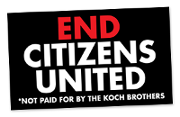Biblio
Filters: First Letter Of Title is C [Clear All Filters]
(1997). Core Java 1.1 Volume 2.
(1997). The circle of innovation : you can't shrink your way to greatness.
"...wealth is not gained by perfecting the known, but by imperfectly seizing the unknown." (p. 30)
(1998). The Critical 14 Years Of Your Professional Life.
"What are the bosses' strengths and weaknesses?
We all have them. Usually, our weaknesses outnumber our strengths. When you do a strengths/weaknesses 'audit' of the boss, be prepared for the weakness column to extend beyond the strengths. Once I got savvy about the world of bosses, I considered it a major strength that the executive simply was breathing. The higher you put your standards for how bosses should act, the harder you're going to fall when a particular boss doesn't measure up. Remember breathing—it's a major strength." (p. 60)
We all have them. Usually, our weaknesses outnumber our strengths. When you do a strengths/weaknesses 'audit' of the boss, be prepared for the weakness column to extend beyond the strengths. Once I got savvy about the world of bosses, I considered it a major strength that the executive simply was breathing. The higher you put your standards for how bosses should act, the harder you're going to fall when a particular boss doesn't measure up. Remember breathing—it's a major strength." (p. 60)
(1998). Critical SHIFT: The Future of Quality in Organizational Performance.
"Sometimes the search for a position in your organization that matches your desires leaves you empty-handed. In this situation you must make the decision to leave the organization or stay and create a new position if you believe it will add value. If you decide to stay, do not be deterred by those who tell you it will be impossible to create a new role. Our parents taught us 'Where there's a will, there's a way.' "
(1999). Core Java 2 : Volume 1 Fundamentals.
(2000). Claw Your Way to the Top: How to Become the Head of a Major Corporation in Roughly a Week.
"So the trick, with subordinates, is to keep them happy, productive, hopeful, and—above all—subordinate." (p. 36)
(2000). The Cluetrain Manifesto : The End of Business As Usual.
"Conversations are where intellectual capital gets generated. But business environments based on command-and-control are usually characterized by intimidation, coercion, and threats of reprisal. In contrast, genuine conversation flourishes only in an atmosphere of free and open exchange." (p. 15)
(2002). Creating Sustainable Work Systems.
If one is to believe history, intensity of work has been a central issue in management science ever since the start of industrialization and a problematic one at that, as it captures the essence of the antagonism between the person who does the work and the person who wants it done; sometimes formulated as a conflict between capital and labour, inherent in the capitalistic industrial system. This perspective does not indicate many remedies apart from a proletarian revolution—still there would be conflicting interest." (p. 15)
(2002). Creativity.
Express Exec.
"Many of the most important tasks related to shaping and fostering ideas are not a 'mandated' part of a manager's role. The experimentation and play that is so important to creativity will not occur unless managers match what they say with what they and the organization do to reward and recognize risk taking, whether or not it is successful." (p. 85)
(2002). Crossing the Unknown Sea: Work as a Pilgrimage of Identity.
"For real conversation we need a real language. To my mind that is the language not enshrined in business books or manuals but in our great literary traditions. Keats or Wordsworth, Emily Dickinson or Mary Oliver often say more in one line about the invisible structures that make up the average workday than a whole shelf of contemporary business books."
(2003). Career Warfare: 10 Rules for Building a Successful Personal Brand and Fighting to Keep It.
"Organizations that value you only for your business skills—a lot of Wall Street firms fall into this category—are very antiseptic. They tend to be built on addictions, but not loyalties: addictions to the money, addictions to the process. They are a bit like galley ships. The overseers don't care about the relationship. They just want you to keep rowing.
This is fine when times are good, but if you should ever fail to handle your oar well, you are overboard. Such firms will have no compunction about firing you and even ruining your reputation, if it serves their purpose." (p. 54)
(2003). Controlling People: How to Recognize, Understand, and Deal with People Who Try to Control You.
"Other people's definitions of us are not just absurd—if unchallenged, they erect prison walls around us. As they rise higher, the light of awareness fades. The world darkens. We lose freedom, safety, confidence, conviction, and sometimes ourselves." (p. 77)
(2005). Crunch Time: 8 Steps to Making the Right Life Decisions at the Right Times.
"Through experience and observation, I've learned and counselled that people who are hostile and belligerent often have developed their 'offensive' posture as a form of defense. These individuals lash out to keep people from further hurting them, possibly discovering and uncovering their vulnerability, and/or from seeing how hurt and rejected they truly feel. Time and again, their defensive behavior is used as a buffer to protect the raw feelings hidden within. In essence, these individuals appear to believe that: 'If I attack you first, I might scare you off, and you won't get to me. Thus, I'm safe for the moment from hurt, disappointment, rejection, etc. Safe from people seeing the truth.'
Another defensive strategy that I deal with on a regular basis is that of withdrawal or apathy. In these cases, individuals appear to withdraw from life and/or appear not to care, in order to conceal their low self-esteem and their intense fear of feeling more rejection and pain. These individuals, in some respects, take the opposite approach in order to protect themselves. They get out of the game altogether. If they don't get up to bat in the game of life, they can't strike out. If they don't put themselves into the contest, they can't be judged—and be rejected. These individuals appear as if—or say—they don't care. But deep down, they care, and once cared—big time. But as a result of past experiences of perceived or real rejection, they've chosen to never let themselves, or their expectations be rejected or dashed again. By withdrawing from it all, they're better safe than sorry." (p. 197)
Another defensive strategy that I deal with on a regular basis is that of withdrawal or apathy. In these cases, individuals appear to withdraw from life and/or appear not to care, in order to conceal their low self-esteem and their intense fear of feeling more rejection and pain. These individuals, in some respects, take the opposite approach in order to protect themselves. They get out of the game altogether. If they don't get up to bat in the game of life, they can't strike out. If they don't put themselves into the contest, they can't be judged—and be rejected. These individuals appear as if—or say—they don't care. But deep down, they care, and once cared—big time. But as a result of past experiences of perceived or real rejection, they've chosen to never let themselves, or their expectations be rejected or dashed again. By withdrawing from it all, they're better safe than sorry." (p. 197)
(2006). CrazyBusy : overstretched, overbooked, and about to snap : strategies for coping in a world gone ADD.
"Our task now is to learn how to use the technology we've invented, rather than allow it to use us, so that it improves our human connections, and does not replace them."
(2007). Coffee with Oscar Wilde.
(2010). Can Being Creative Improve Your Health?.
"Highly creative individuals have long noted the salutary effects of creative activity on both physical and mental health. Many types of creative work can relieve stress and enhance positive mood, two major factors in promoting good health."
(Submitted). Creativity in Your Professional Life.
"When you find yourself stuck on some problem or issue, taking a trip or simply immersing in a new environment often brings up synchronistic solutions. The trouble is, we can't mentally 'will' ourselves to go to this new place. Our minds know how to analyze, compartmentalize and dissect; they know how to churn things around in circles. They do not know how to enter the imaginal."
- « first
- ‹ previous
- 1
- 2
- 3
(C)2014 CC-BY-NC 3.0, workcreatively.org











 ]
]